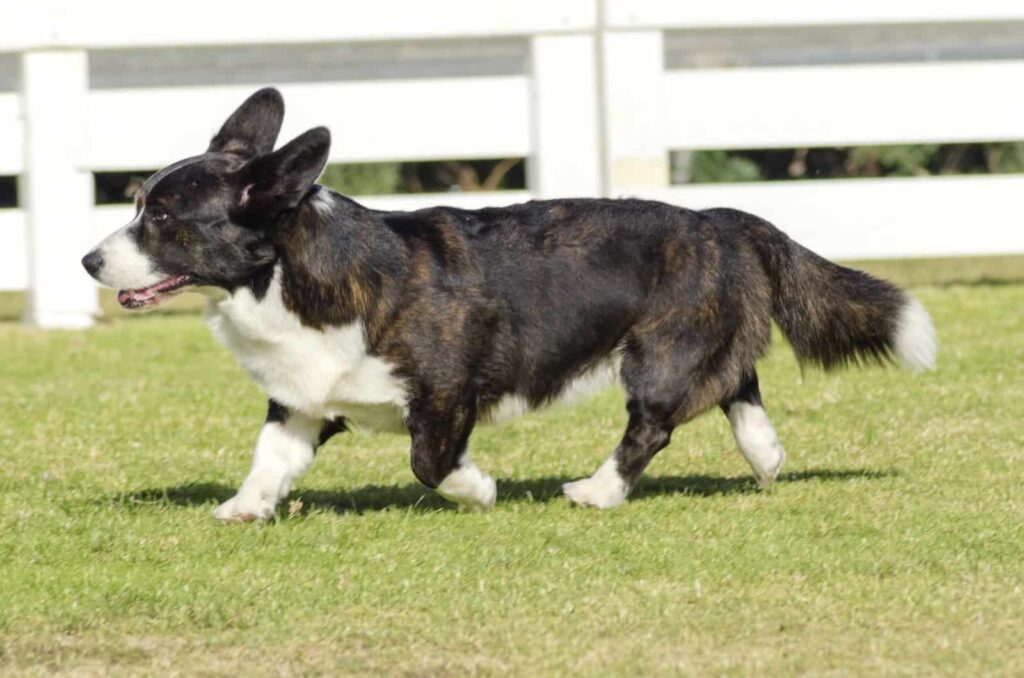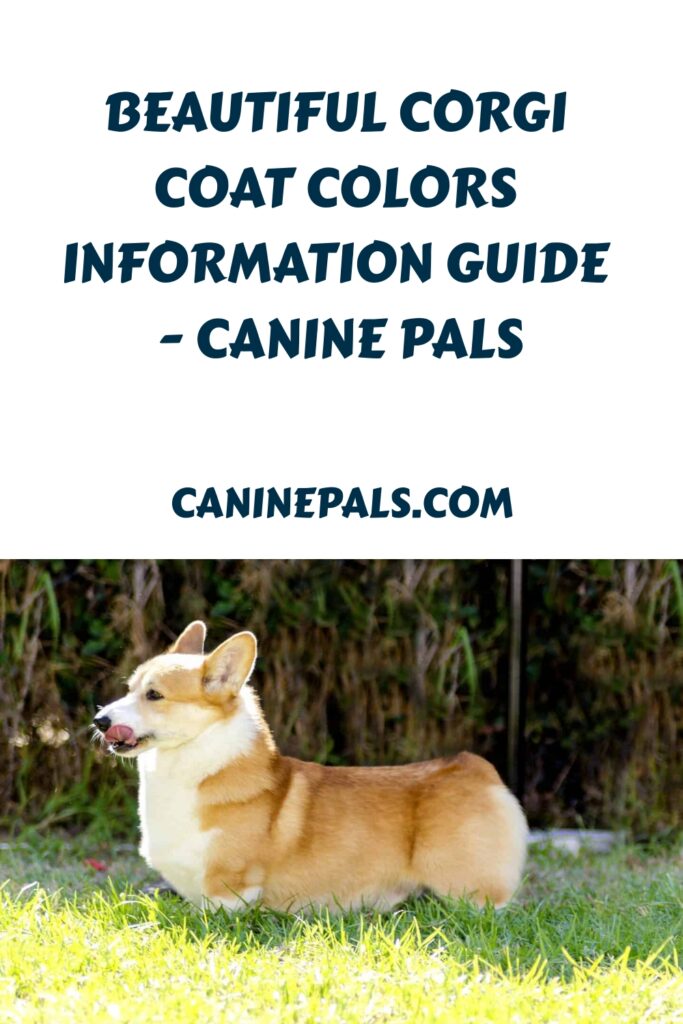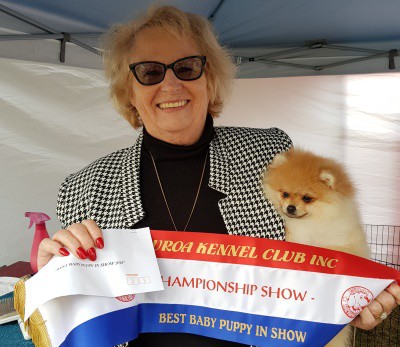Last Updated on April 7, 2024 by Denise Leo. Post first published on April 7, 2024.
Diving into the world of corgi coat colors reveals a fascinating blend of genetics and breed standards. The American Kennel Club breed standard recognizes specific colors and patterns that align with the breed’s standard, including sable, fawn, red, and the distinctive tricolors.
Factors like recessive genes, the merle gene, and the dilution gene play crucial roles in various colors, including rare ones like blue merle. Understanding these nuances helps prospective dog owners and enthusiasts select the right dog while appreciating the breed’s diversity.
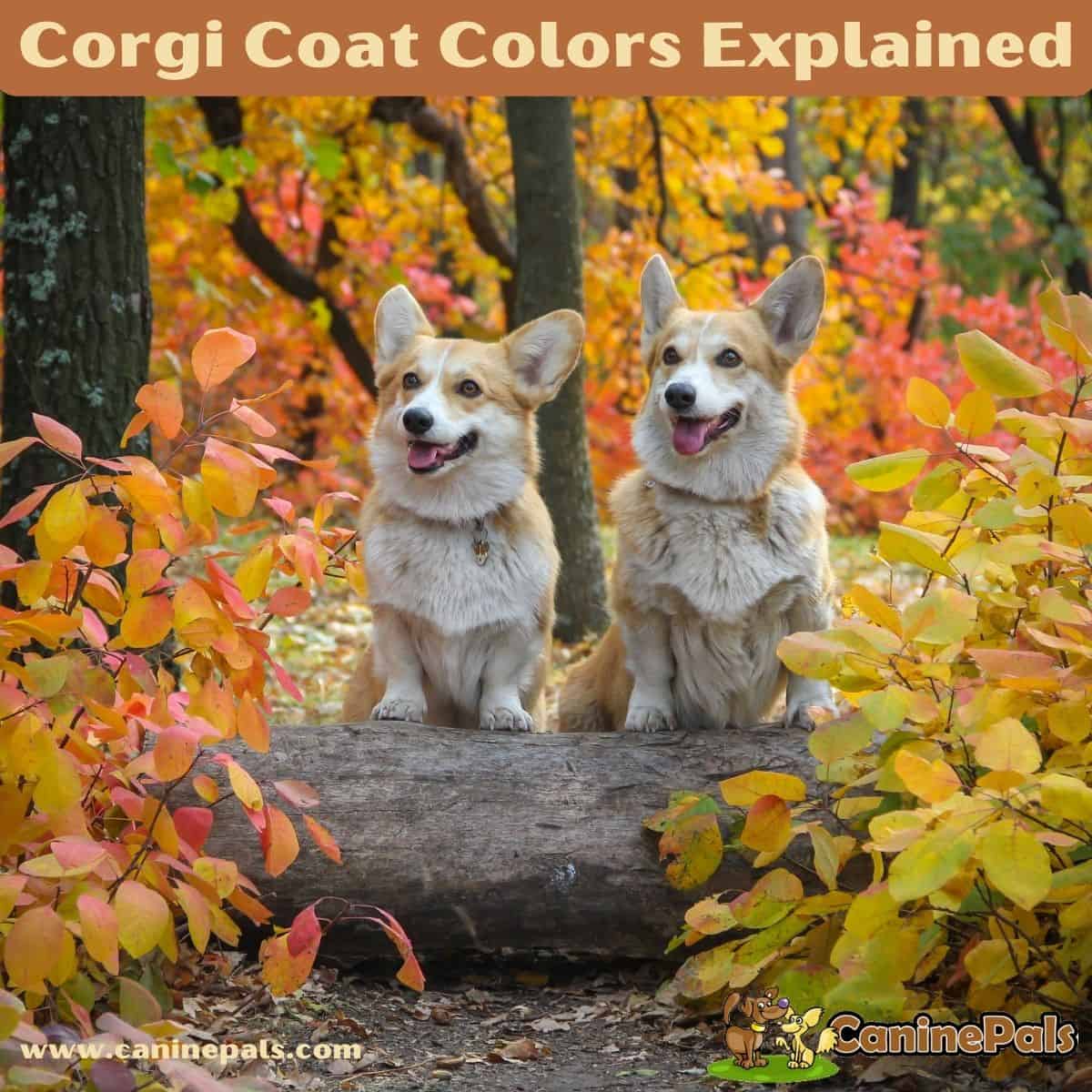
Different Coat Colors of Corgis
Corgis have the most beautiful, thickest two-layered coat, which makes them oh-so-squishable. They look like small Furballs due to their heavy coat. It is important to remember that corgis are fur shedders big time, and the double-layer coat keeps falling off around the year, but mostly in spring.
The color of a corgi’s coat can change over time as well. Corgis come in various splendid colors to choose from.
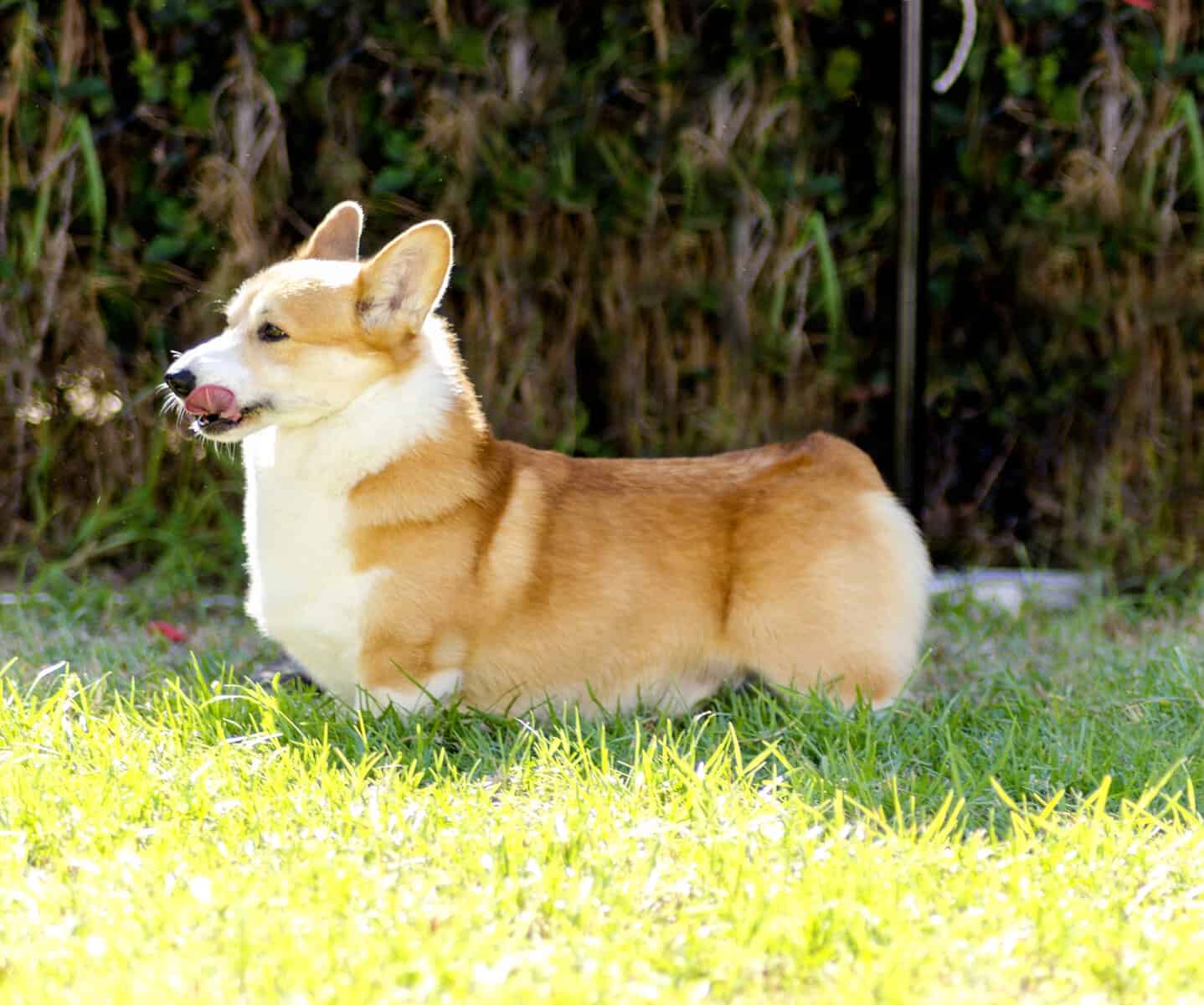
-
Pembroke Welsh Corgi Coat Colors
This Corgi’s coat is a beautiful contrast of red and white, with the head portion and body usually red, whereas the lower body has thick white fur.
In pure breeds (the mother dog and father dog were of the same breed), Pembroke Welsh Corgis have five colors: red and white, red-headed tricolor, sable and white, fawn and white, and tricolor.
Color: The outer coat is to be of self colors in red, sable, fawn, black and tan with or without white markings. White is acceptable on legs, chest, neck (either in part or as a collar), muzzle, underparts and as a narrow blaze on head. Very Serious Faults – Whitelies – Body color white,
with red or dark markings. Bluies – Colored portions of the coat have a distinct bluish or smoky cast. This coloring is associated with extremely light or blue eyes, liver or gray eye rims, nose and lip pigment.Mismarks – Self colors with any area of white on the back between withers and tail, on sides between elbows and back of hindquarters, or on ears. Black with white markings and no tan present.
The Pembroke Welsh Corgi American Kennel Club Standard Color Section
Redhead tri-color corgi coat
This corgi coat comes in red, white, and black shades. As the name shows, the head coat is red, whereas the body gives all three different shades.
Sable and white color corgi coat
This is the sand-colored coat with a white contrast. The Sable color looks wonderful in sunlight but requires good maintenance; otherwise, the coat looks untidy.
Fawn and white Corgi
The fawn color in corgis varies from a pale shade to a tan coat. It contrasts with the white shade, thus looking wonderful.
Tricolor
In this type of coat, black is more dominant, and the dog’s head is also predominantly black, whereas shades of red and white are also present in the body.
Note: if you spot a Pembroke Welsh in a color other than the above five, please ask for a pedigree chart as it could be of mixed breed (the mother dog and father dog were of different breeds). If you plan to take your dog to dog shows, a pure breed is required. But if you only need a domestic pet, then a mixed-breed corgi would do the job, too.
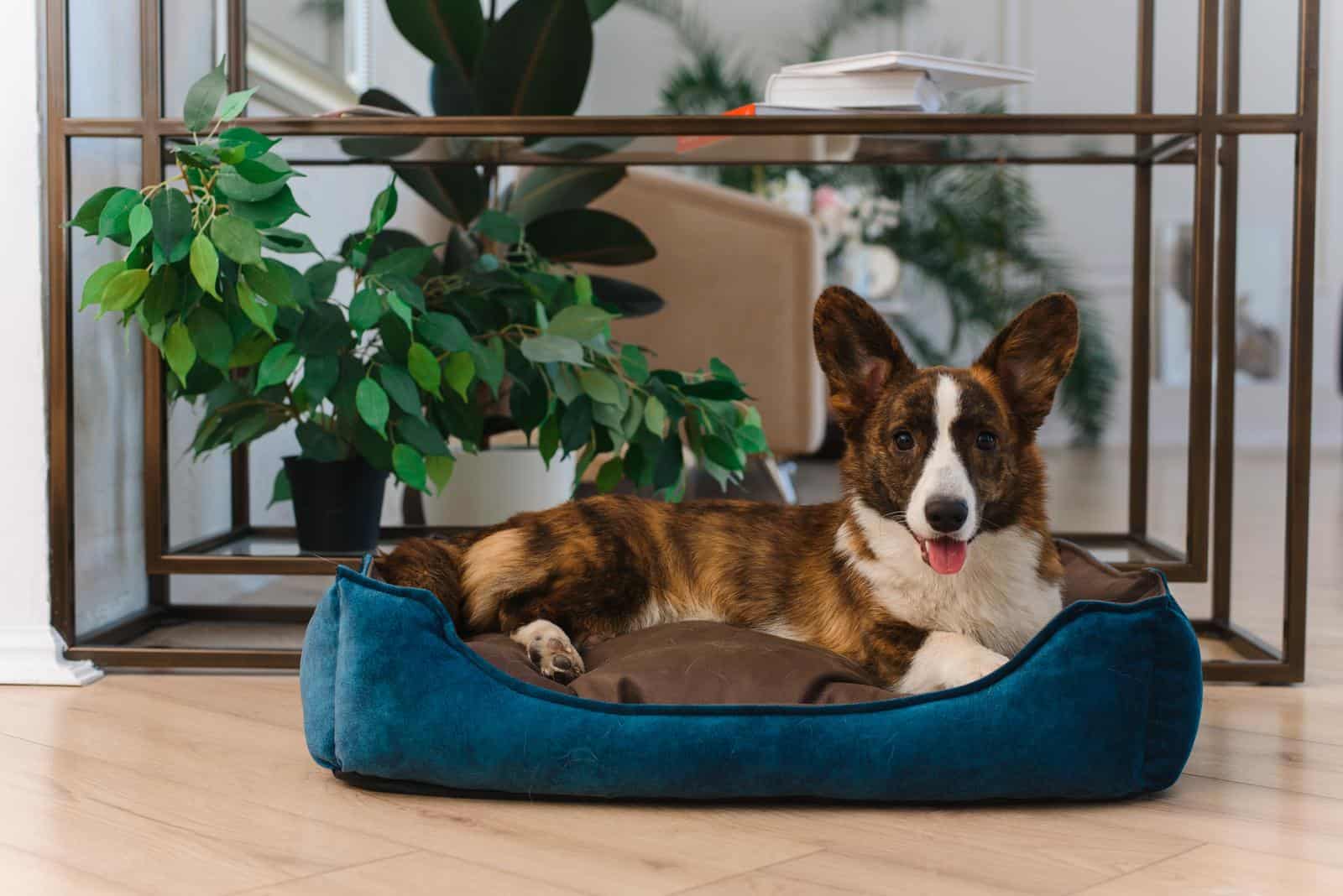
-
Cardigan Corgi Coat Colors
With upright ears and foxy brush tails, cardigan corgis are less preferred than their cousins in Pembroke Welsh. Cardigan Corgis come in eight dazzling shades: red, brindle, sable, black, brindle, black with tan points, black with brindle points, blue with tan points, and blue with brindle points.
Color: All shades of red, sable and brindle. Black with or without tan or brindle points. Blue merle (black and gray; marbled) with or without tan or brindle points. There is no color preference. White flashings are usual on the neck (either in part or as a collar), chest, legs, muzzle, underparts, tip of tail and as a blaze on head. White on the head should not predominate and should never surround the eyes. Any color other than specified and/or body color predominantly white are disqualifications.
The Cardigan Welsh Corgi American Kennel Club Standard Color Section:
Red, all shades
The upper body and head are in any shade of red, from light to dark, but the underbelly coat is white.
Brindle
The corgi coat with a striped pattern is called a brindle color coat. Depending on the breed, the coat’s base color may be red, black, ebony, or white.
Black brindle
A true black-and-white color contrast does not exist in cardigan corgis, and they usually have brindle-striped patterns or patches. Normally, the upper body is black brindle, while the underbelly and paws give a white shade.
Sable, all shades
These corgis are predominantly sand-colored but may have a white undercoat and black or red patches on the tail, neck, and belly.
Black with tan points
The coat of these corgis is lush black with white underbellies, and some specific points of the bodies are tanned; for instance, under the face and under the legs, there are tan patches.
Black with brindle points
As the name shows, the coat is black, primarily with white under-body fur; however, striped pattern patches can be seen on some body areas.
Blue merle with tan points
This corgi coat looks like a tie and dye pattern of different shades. Blue merle refers to the diluted black shade, the base color with black, white, and tan patches.
Blue merle with brindle points
Similar to the above, this is also a multicolored tie and dye pattern coat, but it also has stripped patches on the body.
Note: People often confuse Pembroke Welsh corgis with cardigan corgis; however, the different colors of corgi coats and tails help identify the breed.
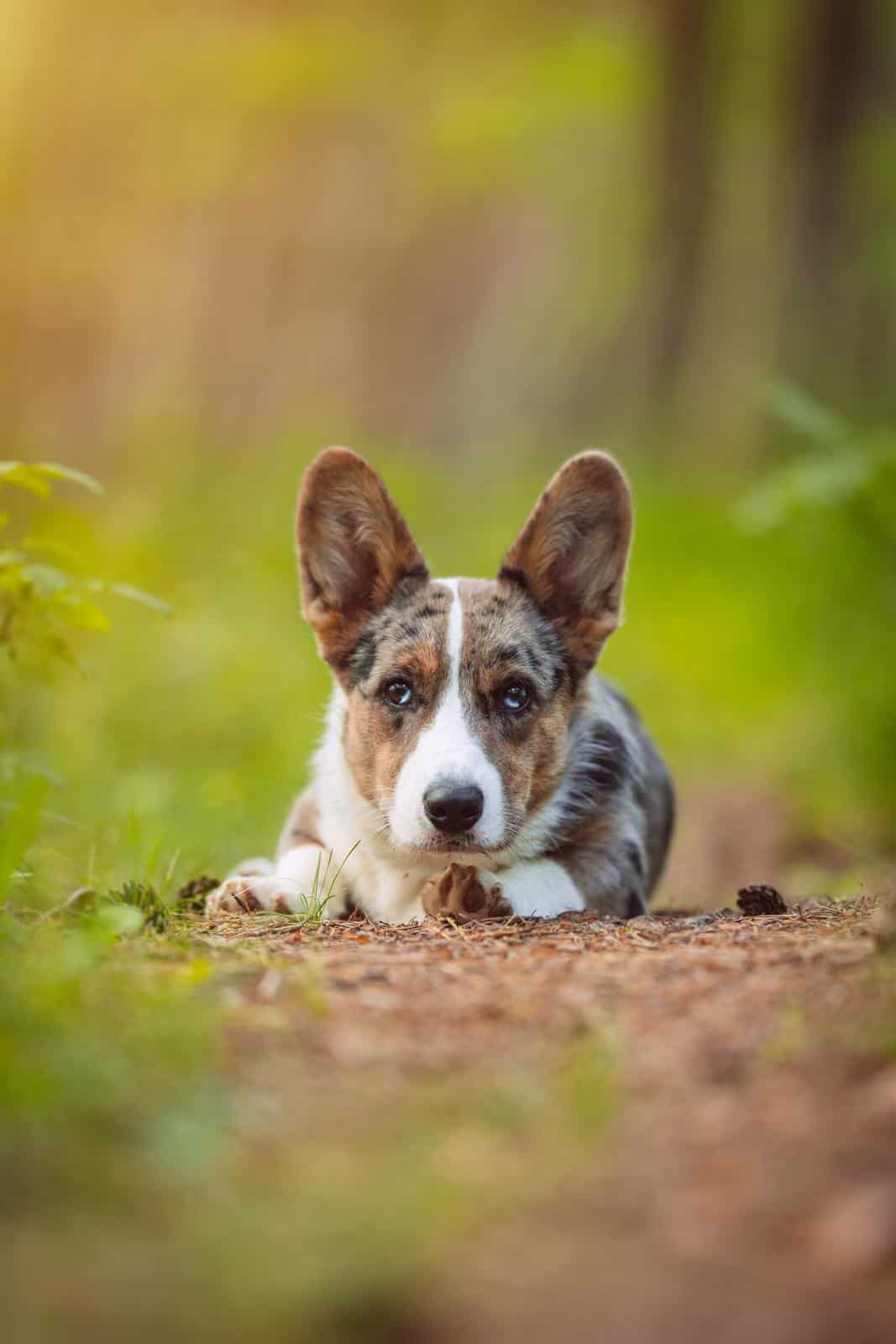
Corgi Dog Breed Details
Corgis are known for their ability to create an affectionate bond with their caregivers. They are undoubtedly the most adorable, witty creatures scooped in tiny sausage-like bodies (that’s what they look like if seen from above). Due to their vibrant personality, they are known as fun-loving, friendly pets.
Corgis are super active dogs. Their agility keeps their masters on their toes; therefore, a corgi pup must be the ultimate choice for anyone looking for an endearing pet to kill boredom and laziness. But the cherry on the cake is their little woolly bodies and most expressive adorable faces.
So if you have already decided to add this dose of goofiness, aka Corgi dog, to your life or you are still unsure, keep scrolling down because you are about to discover important corgi facts like different color corgis, types of corgis, the average cost of a corgi puppy, what their personalities look like, how many puppies a corgi can have, whether they are child-friendly, and much more.
The Pembroke Welsh Corgi is from Pembrokeshire, and Flemish weavers brought his direct ancestors over the Channel in 1107. His ancestors resembled the Schipperkes, including the Keeshond, Samoyed, Pomeranian, Finnish Spitz, Norwegian Elkhound, and Chow Chow. He’s shorter than the Cardigan Corgi and has lighter-boned legs.
He’s one of the best companions because of his demeanor. He loves people, BUT he may try to herd you. He’s easy to train and is very friendly. His coat may be tan and black, red, fawn, or ebony, and may have white markings. His tail is short, and his ears are pointed; he needs regular brushing and exercise.
Corgis were named after their short bodies. The literal meaning of the word Corgi in Welsh is “dwarf dog.” The average corgi weighs between 23 and 28 pounds and is 10 to 12 inches tall.
Life expectancy
Their life expectancy is 12-15 years, and most Corgi owners consider those years the time of their lives because these short-statured dogs are incredibly delightful and addictive.
Temperament
Corgis are the most striking, outgoing, social, playful, and protective breed. Their friendly nature makes them the safest pets around children, so if you have kids in the house, Corgis could be the best source of entertainment and healthy activities for them.
Corgi dogs originated from Pembrokeshire, a county in the Southwest. They were trained for cattle herding, and this trait is still a part of their personality. This is why Corgis follow you around the house and have a great sense of direction.

-
Pembroke Welsh Corgi
Pembroke Welsh corgis are a short-tailed breed and are super energetic. They are also known as party dogs. The royal family loves this breed and became famous after Queen Elizabeth’s apparent obsession with them.
-
Cardigan Welsh Corgi Dogs
The Cardigan Welsh Corgi breed has a long, luscious tail and resembles a little fox. Compared to the Welsh type, they are a bit reserved in nature, but don’t be fooled by the first impression; once comfortable, they are all over their masters.
Corgi coat colors vary according to their breed type as well.
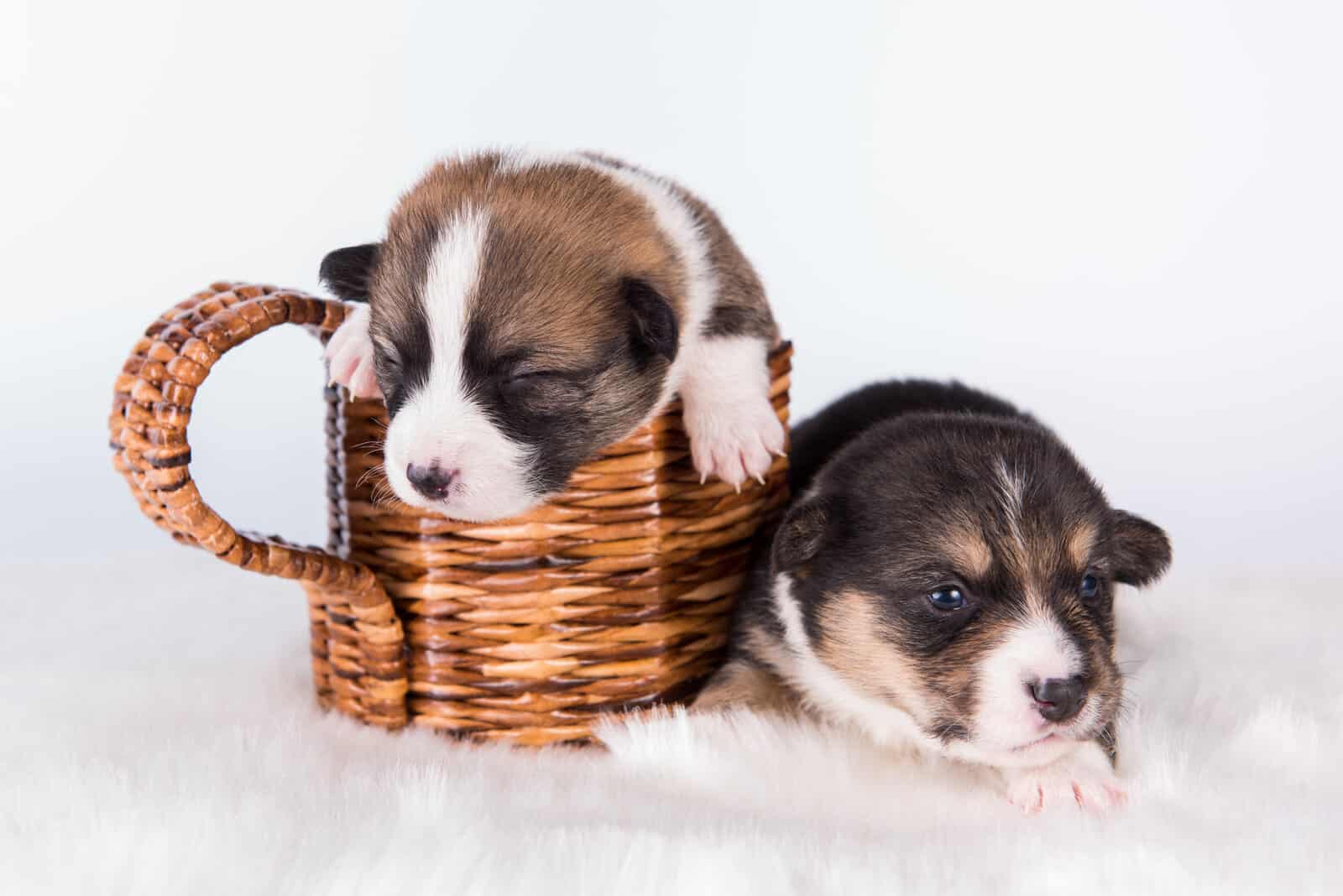
Final Thoughts on Corgi Coat Colors
In conclusion, the rich tapestry of corgi coat colors, from the noble blue merles with their striking blue eyes to the classic red and sable corgis, is a testament to the breed’s diverse genetics. Understanding coat color inheritance, like the interplay of the tricolor, red, and dilute genes, helps appreciate the variety seen in purebred Pembrokes.
Prospective corgi owners should seek a responsible breeder to ensure their pet is beautiful and healthy, as some colors may carry health risks. The world of corgi colors, from solid red dogs with their dark markings to fluffy-coated white corgis, is about aesthetic appeal and maintaining the breed standards set by organizations like the Pembroke Welsh Corgi Club of America.
Copyright CaninePals.Com. All Rights Reserved.


